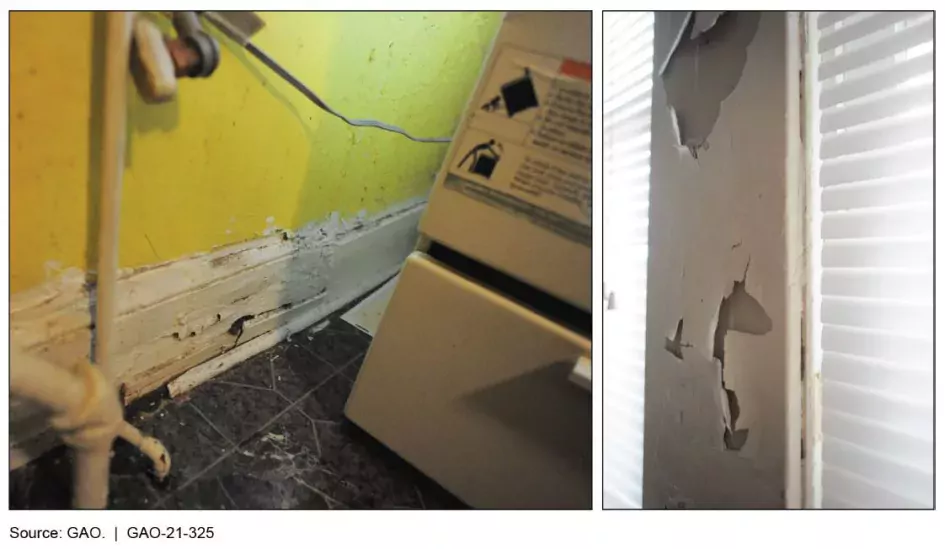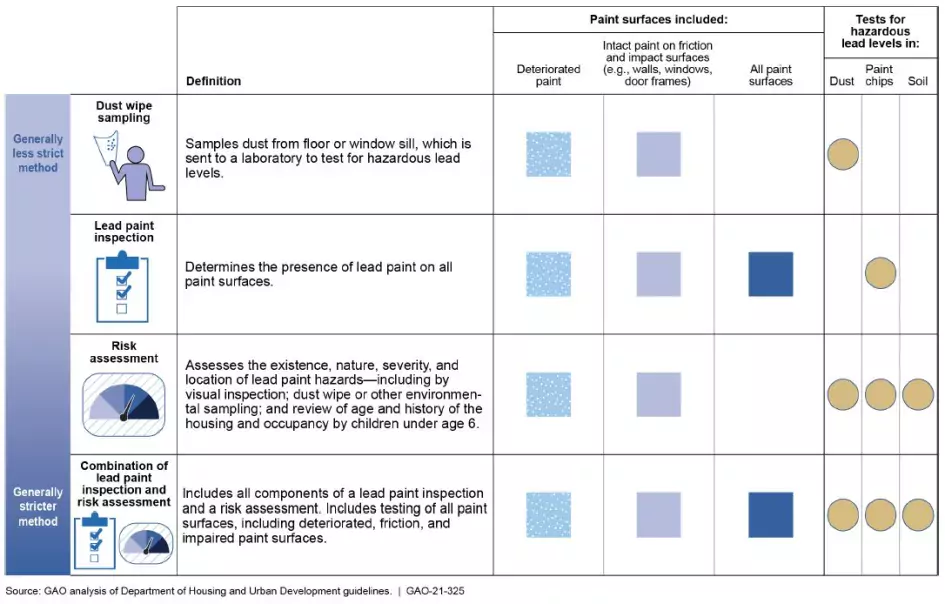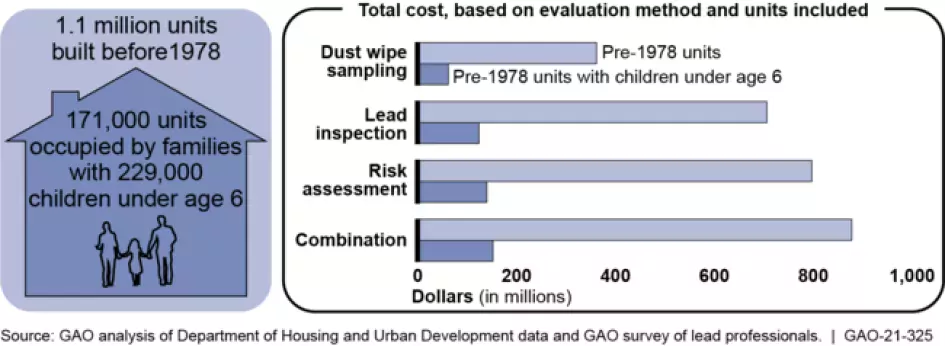The Danger of Lead Paint Hazards in Two HUD Programs
Lead exposure poses significant health risks—particularly to young children—because it can damage their still-developing brains and nervous systems. Prior to a 1978 ban on the use of lead in paint, lead paint was commonly used in homes. And despite this regulation and efforts to remove lead paint, there are concerns that it can still be found in federally funded housing as well as locations with higher rates of those living in poverty.
In recognition of Lead Poisoning Awareness Week, today’s WatchBlog post explores our work on the dangers of lead poisoning in two Department of Housing and Urban Development (HUD) programs—Project-Based Rental Assistance and the Housing Choice Voucher program. These programs provide rental subsidies to property owners and renters, respectively, to keep housing affordable for tenants living in poverty.
Examples of Homes with Lead Paint Hazards
Image

Lead Paint in HUD’s Project-Based Rental Assistance (PBRA) Program
Last year, we reported that 21% of PBRA properties had at least one building that was constructed before 1978 and housed children under the age of 6. We found that California and states concentrated in the Northeast and Midwest, had the highest number of PBRA properties with pre-1978 buildings, and therefore most at risk for lead paint hazards.
HUD periodically conducts physical inspections of properties, but the department has not completed a comprehensive assessment that would identify properties posing the greatest risks of lead exposure to young children. We recommended that HUD do so, and noted that using information on the age of buildings (1978 and older) and the locations where those buildings are concentrated would help. We also recommended that HUD develop a plan to proactively manage risks associated with lead paint hazards.
PBRA Properties with at Least 1 Building Built before 1978 That Housed Children Under 6 Years Old as of December 2019
Image

Lead Paint in HUD’s Housing Choice Voucher Program
As of December 2019, HUD’s Housing Choice Voucher Program had 1.1 million families living in units built before 1978—including about 229,000 children under age six. In recent reports, we looked at how HUD generally conducts lead inspections, and estimated potential costs for HUD to conduct inspections of older units, including those where there are children under six.
How HUD conducts inspections. In 2018, we reported that HUD’s current method of inspecting for lead relied on visual assessments (meaning inspectors would look for signs of lead in deteriorated paint). However, this method does not effectively identify all lead paint hazards. HUD has identified four alternative methods for detecting lead. For FY 2022, Congress has provided funds for HUD to test one of the four lead evaluation methods in voucher units.
Lead Paint Evaluation Methods
Image

The costs of inspections. In May, we reported that the cost of conducting inspections could range from $60 million to $880 million. This range depended on whether HUD focused on units with young children ($60 million) or looked at all pre-1978 units ($880 million). The below figure shows the estimated cost of four different lead testing methods in voucher units.
Image

How to check for lead in your home
If you think your home has lead paint, the Environmental Protection Agency (EPA) recommends a number of steps you can take to protect your family from lead hazards, including:
- Keep painted surfaces in good condition to minimize deterioration.
- Clean floors, window sills, and other surfaces where lead dust often collects.
- Talk to your landlord about fixing surfaces with peeling or chipping paint if you rent.
- Hire only EPA or state approved Lead-Safe certified renovation firms when renovating, repairing, or repainting if you own (click here to learn more).
- Consult your healthcare provider about testing your children for lead exposure. Your pediatrician can conduct a simple blood test.
In March 2021, EPA issued a new brochure about protecting your family from lead at home. Click here to find out more.
- Questions on the content of this post? Contact the WatchBlog team at blog@gao.gov
GAO Contacts
Related Products

GAO's mission is to provide Congress with fact-based, nonpartisan information that can help improve federal government performance and ensure accountability for the benefit of the American people. GAO launched its WatchBlog in January, 2014, as part of its continuing effort to reach its audiences—Congress and the American people—where they are currently looking for information.
The blog format allows GAO to provide a little more context about its work than it can offer on its other social media platforms. Posts will tie GAO work to current events and the news; show how GAO’s work is affecting agencies or legislation; highlight reports, testimonies, and issue areas where GAO does work; and provide information about GAO itself, among other things.
Please send any feedback on GAO's WatchBlog to blog@gao.gov.




